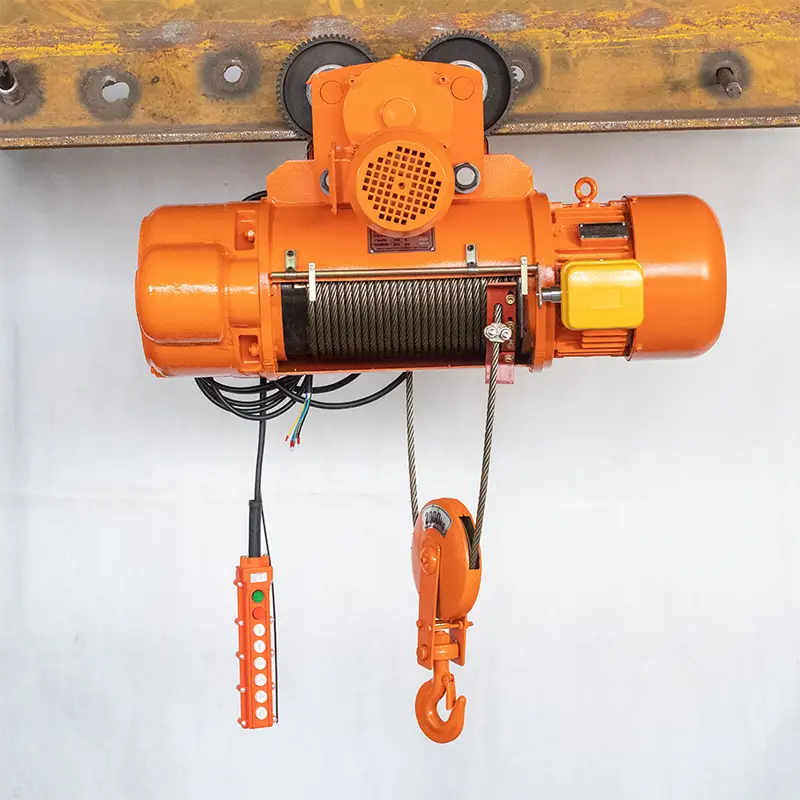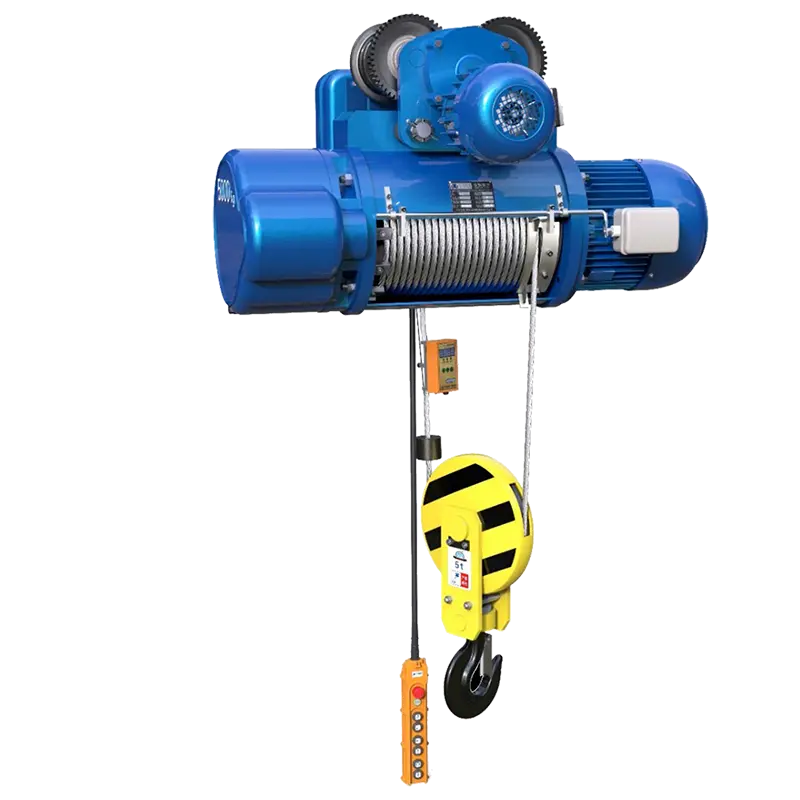Electric hoist speed and speed adjustment method
Electric hoist speed and speed adjustment method

The speed of an electric hoist mainly depends on its type and specific application scenario. Different types of electric hoists, such as mini electric hoists, wire rope electric hoists and chain hoists, have different speed characteristics.
The speed of the miniature electric hoist can reach 10 meters/minute. This kind of electric hoist is especially suitable for daily civilian use, industrial production lines, freight logistics and other occasions. It has a simple structure, easy installation, and uses 220V civilian power supply, making it suitable for use in various occasions.
Electric wire rope hoists are available in a wide range of speeds, depending on their model and design. For example, the lifting speed of the CD1 single-speed electric wire rope hoist ranges from 8 meters per minute to 3.5 meters per minute, depending on the lifting weight and lifting height. The MD1 two-speed wire rope electric hoist provides a more flexible speed selection, which can be switched between 8 meters per minute and 0.35 meters per minute to meet the needs of different working scenarios.
The lifting speed of electric chain hoists also varies, and its speed can be as high as 12 meters per minute or even higher, depending on its design and manufacturing accuracy. In the early days of the application of electric chain hoists in my country, due to its manufacturing precision and technical limitations, its speed was relatively slow. However, with the advancement of technology, the speed of modern electric chain hoists has been significantly improved.
To sum up, electric hoists have a wide range of speeds, ranging from a few meters per minute to more than ten meters per minute, depending on their type, design and application scenarios. Different types of electric hoists have their own characteristics and advantages. Users can choose the most suitable type of electric hoist according to specific needs.
Introduction to four commonly used electric hoist speed adjustment methods
In order to meet the different needs of users, some models of electric hoists have two lifting speeds. Many people think that using a frequency converter is the best method, but some electric hoists are not suitable for using frequency converters.
The following introduces the commonly used electric hoist speed adjustment methods. .

1. Motor rotor resistance speed regulation has the advantages of simple structure, low price and average quality. Its disadvantage is that the speed changes greatly and is unstable.
2. By adjusting the speed through the hydraulic push rod, a relatively stable speed can be obtained, but the speed is low, the intermediate speed is soft, and the mechanical parts of the electric hoist must be partially modified when using it.
3. The speed adjustment method through power braking is characterized by adjustable speed gears, high energy saving, safe and reliable use, but the disadvantage is that it cannot grasp low speeds.
4. Speed regulation through a frequency converter is the most ideal frequency conversion speed regulation method, which can achieve stepless speed regulation. It also has high control accuracy, can be operated remotely, and is easy to use and maintain. However, it should be noted that electric hoists with conical motors are generally not suitable for use with frequency converters, because all frequency converters require acceleration time when starting. During acceleration, the voltage rises slowly, and the conical rotor cannot be shifted and released in an instant. , it is easy to cause the overload protection of the frequency converter.
During daily use, the speed adjustment of the electric hoist directly affects the efficiency of construction machinery production. Users must choose the best speed adjustment method according to different types of electric hoists.









